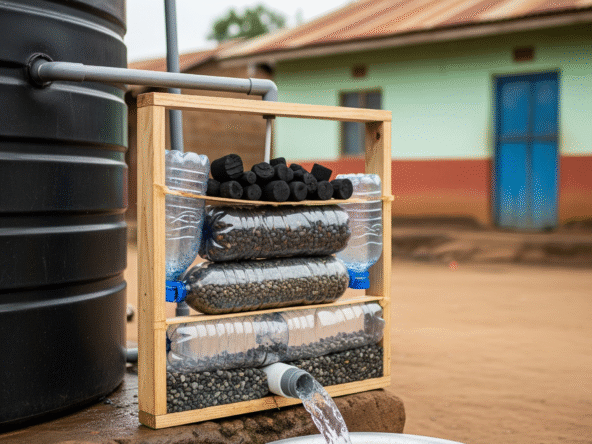In many parts of Kenya, especially in multi-story houses, rentals, and off-grid farms, gravity alone is not enough to move water efficiently. A booster pump helps deliver water with the necessary pressure whether to an overhead tank, irrigation system, or indoor plumbing.
This article outlines the most common booster pump types, how to match each with your setup, and what factors to consider when buying one.
1. What Is a Booster Pump?
A booster pump takes in water at a low pressure and increases it to a higher level. It’s useful when water needs to be pushed upward to higher floors or across long horizontal distances.
Booster pumps are often paired with gravity-fed tank setups to ensure consistent delivery across all outlets in a home or farm.
2. Common Booster Pump Types in Kenya
| Type | Ideal Use Case | Key Advantages |
|---|---|---|
| Centrifugal Booster | Household water from roof or ground tanks | Affordable, easy to install |
| Multistage Booster | Apartments, pressure-intensive systems | High-pressure output for tall buildings |
| Inline Booster | Bathroom or kitchen point-of-use boosting | Quiet, energy-efficient, space-saving |
| Jet Booster | Shallow well or suction setups | Good suction and self-priming |
| Submersible Booster | Underground tanks and enclosed pump installations | Quiet operation, reliable in deep setups |
To automate refills, integrate with tank refill float switches, which work well with all booster pump types.
3. What to Consider Before Buying
Before purchasing, evaluate:
- Water source: Roof tank, underground storage, or shallow well
- Required pressure: For showers, taps, irrigation, or rooftop delivery
- Vertical lift: How high the pump must push water
- Daily water usage: Household demand or farm irrigation cycles
For agricultural use, read Sizing Pumps for Irrigation to properly match pump capacity with your land and crop needs.
4. Powering Your Booster Pump
Booster pumps can be powered by:
- Electricity – Ideal for urban homes and rentals
- Solar – Suitable for off-grid farms and rural installations. See solar pump options
- Petrol or diesel – Used in remote areas without grid power
During poor weather, combine power sources for resilience. Learn more in Backup Pumping Options During Cloudy Days.
5. Noise Control and Maintenance
- Inline pumps are quiet and suited for interior use.
- Jet and centrifugal pumps should be housed in outdoor sheds to reduce sound.
See practical advice in Pump Noise Reduction in Kenyan Homes, especially for installations near bedrooms or work areas.
Regular maintenance includes:
- Cleaning filters
- Checking for leaks
- Replacing worn-out gaskets or impellers
- Inspecting wiring and pressure switches
6. Price Estimates for 2025
| Pump Type | Price Range (KES) |
|---|---|
| Centrifugal | 8,000 – 18,000 |
| Inline Shower Pump | 5,000 – 15,000 |
| Multistage Pump | 20,000 – 40,000 |
| Jet Booster | 15,000 – 30,000 |
| Submersible Booster | 18,000 – 50,000 |
Choose models with dry-run protection, overload shut-off, and readily available spare parts for easier maintenance and long-term performance.
Whether you’re enhancing flow in a townhouse, irrigating crops on a smallholding, or supplying water to an apartment complex, choosing the right booster pump type ensures both comfort and reliability.
Plan your pump system carefully match the type to your terrain, power availability, and usage needs. A well-selected booster pump can transform even the most sluggish water system into a high-pressure, dependable setup.
Explore More:


